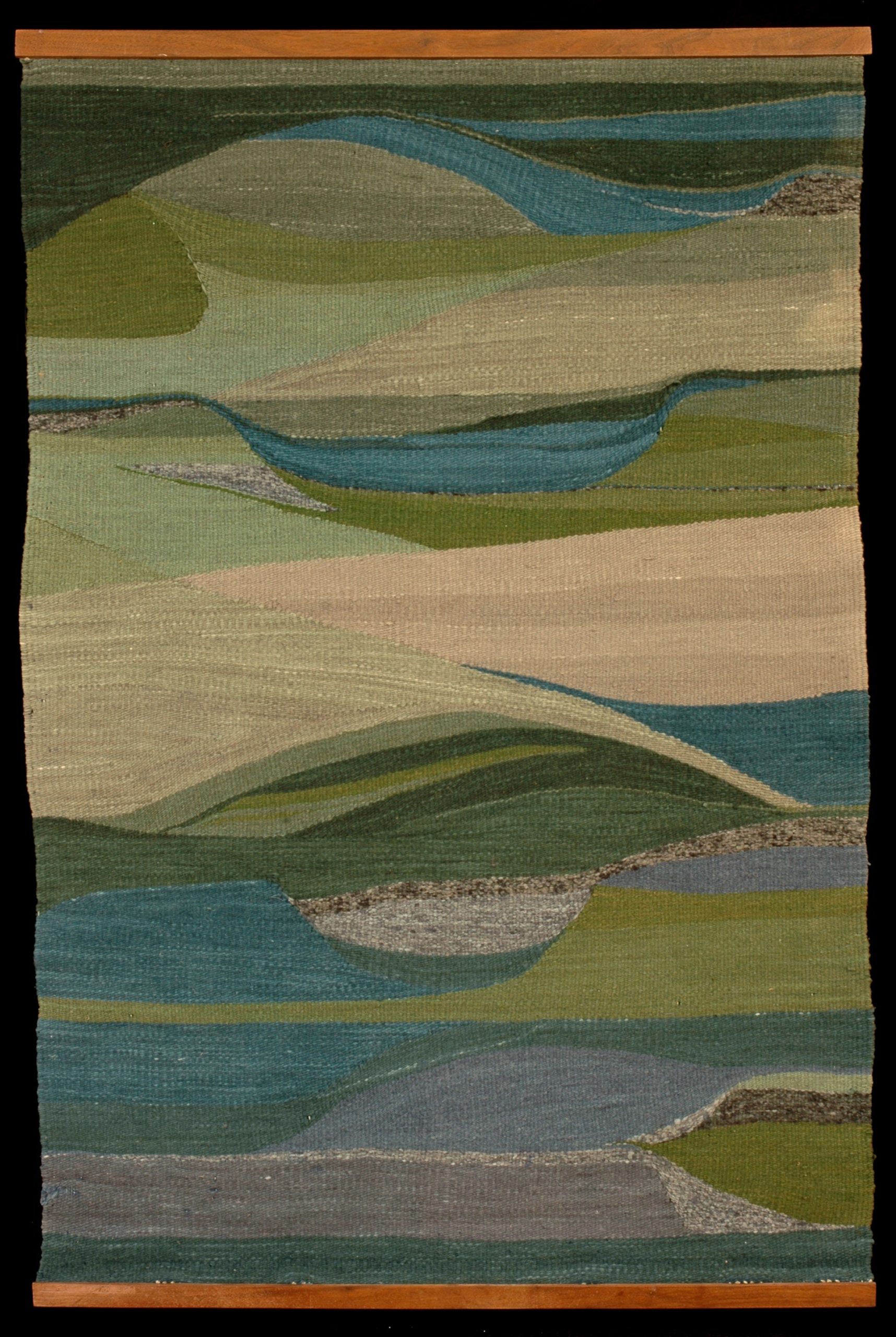Over the past year or so, modern and contemporary weaving has loomed large in major museum exhibitions across the United States, from solo shows spotlighting present-day weavers, like Diné/Navajo weaver Melissa Cody (MoMA PS1, New York City) and Passamaquoddy basket weaver Jeremy Frey (Portland Museum of Art, Maine), to explorations of woven textiles across decades or millennia, as seen in Weaving Abstraction in Ancient and Modern Art (Metropolitan Museum of Art, New York City) and Woven Histories: Textiles and Modern Abstraction (National Gallery of Art, Washington, DC). Seeking to correct an omission from cultural memory, Cooper Hewitt (New York City) introduced the influential-yet-largely-forgotten modernist weaver Dorothy Liebes to a new generation in a dedicated exhibition.
In an era that’s embracing handweaving with renewed vigor, the book Weaving at Black Mountain College: Anni Albers, Trude Guermonprez, and Their Students (2023), which accompanied a recent exhibition at the institution’s museum, illuminates another lesser-known slice of textile history: the story behind the weaving program at this legendary liberal arts school.
Black Mountain College, open from 1933 to 1957 in the mountains of western North Carolina, is remembered for its experimental approach to free-thinking, interdisciplinary learning and communal living, as well as the famous artists, architects, and thinkers who spent time there as students and faculty. Drawing from previously unpublished archival materials and photos, the handsome, 216-page volume, written by Michael Beggs and Julie J. Thomson, traces the origins and development of the school’s weaving program and its unfolding impact.
It all began when artist-educators Anni Albers and her spouse Josef Albers arrived at the brand-new Black Mountain College in November 1933, after the Nazis forced the closure of the Bauhaus in Berlin, where Josef taught design classes and Anni was the head of the weaving workshop. Josef started teaching at Black Mountain College first, and a few months later Anni started teaching and developing the weaving program. Blending theory and hands-on weaving, art, and practicality, she imbued the program with her modernist sensibilities. Eventually, additional instructors taught in the department, too, including Trude Guermonprez.
The weaving program emphasized independent thinking and a deep understanding of materials and weaving structures as a path to creating inventive and purposeful weavings. Through archival photos and research-driven essays by the co-authors and other contributors (Brenda Danilowitz, Jennifer Nieling, and Erica Warren), Weaving at Black Mountain College illuminates the teaching methods, design exercises, and sorts of art, fabrics, and garments that the college’s students made. Three essays written by Albers add her voice to the mix, conveying the sort of encouragement she must have shared with her students. In one essay, titled simply “Work With Material,” published in Black Mountain College Bulletin 5 (1938), Albers discusses craft as an antidote to modern anxiety, a way to be “close to the stuff the world is made of,” an exhilarating path to self-reliance. “For creativity,” she wrote, “is the most intense excitement one can come to know.”

Given the college’s embrace of fluid, interdisciplinary education, students from across the college took weaving classes and experienced this excitement firsthand. An index in the back of the book lists every student who officially enrolled in weaving classes, including Ray Johnson, Robert Rauschenberg, Else Regensteiner, Andy Oates, and more than a hundred others.
After departing, the book details, students and faculty carried with them the spirit of the weaving program, which echoed in future endeavors. Oates, for one, went on to launch Nantucket Looms, a successful handweaving company that still operates today. Guermonprez kept teaching, including at California College of Arts and Crafts, where she taught Kay Sekimachi, now aged 98, a real “weaver’s weaver,” whose work has been displayed in some of this year’s textile exhibitions. In a 1982 tribute to her instructor, Sekimachi recalls that Guermonprez “urged us to get to know and love materials by touching, seeing, listening, tasting, and smelling them” — a concept that echoes the guiding principles of Black Mountain College’s weaving program.
To further underscore the college’s continuing relevance, Weaving at Black Mountain College concludes with a section called “Contemporary Connections,” featuring interviews with four artists — Jen Bervin, Porfirio Gutiérrez, Bana Haffar, and Susie Taylor — whose work relates to Guermonprez’s and Albers’s ideas and teachings, on and off the loom. As the book shows, even nearly 70 years after shuttering, the college and the weavers who helmed one of its most successful programs continue to have a rippling influence on weaving and creative practices today.




Weaving at Black Mountain College: Anni Albers, Trude Guermonprez, and Their Students (2023) by Michael Beggs and Julie J. Thomson is published by Black Mountain College Museum + Arts Center with Yale University Press, and is available online and through independent booksellers.

